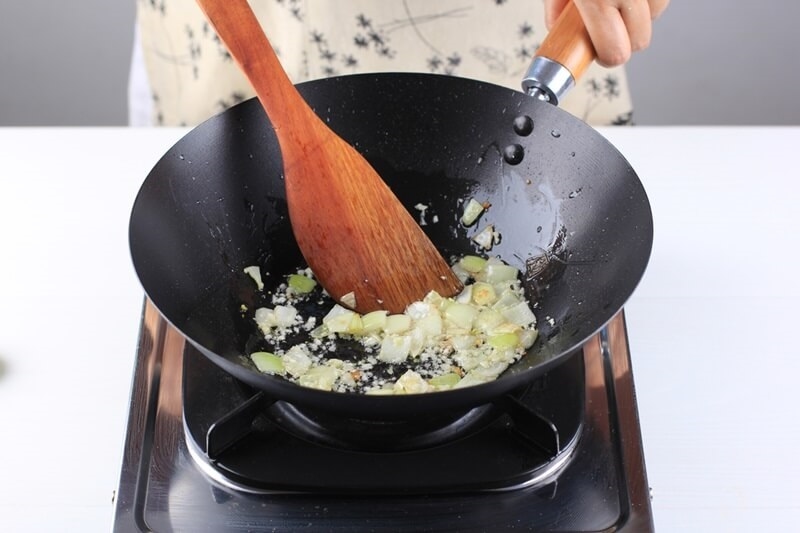
Sautéing is arguably the most fundamental cooking skill in every kitchen. Whether you're a new cook or a professional chef, learning how to sauté can make your dishes better, improve the flavor, and add a professional element to home cooking. In this comprehensive guide, we will explain what you should know about sautéing and how to sauté versus stir-fry, how to choose oils for sautéing, and other healthy cooking methods.
Learning how to sauté is about more than just placing food in a hot pan. A person needs to know the timing, the right heat, and the correct ingredients. To properly sauté, the first step is to preheat your pan, choose the correct oil, and cut your ingredients to be the same size. You can sauté with confidence that your food is cooking evenly (or you are searing it).
Knowing how to sauté versus stir-fry is learning to know the difference between slow, moderate heat cooking (sautéing) and fast, high heat cooking (stir-frying). It is important to understand that stir-frying may always involve a wok.
Both methods are advantageous, but learning the skill of sautéing gives one a basic foundation of adaptable cooking.
A successful sauté starts with a good pan. Choose a wide, flat-bottomed sauté pan or skillet with sloping sides. This makes it simple to toss and turn the ingredients so they cook evenly.
Cutting food items down to precipitated-sized pieces allows for even cooking. Excess moisture on vegetables or proteins will make it harder for them to achieve browning, so blot them off with paper towels before putting them in a pan.
It is important to know how to choose oils for sautéing. You will want to use a high-smoke-point oil like avocado, grapeseed, or refined olive oil. The butter will burn when adding it to high heat and will impart a burned taste. Always preheat a pan before adding oil. The oil will be hot enough when it shimmers and dances around the pan.
If you follow these steps, you will learn how to sauté food properly and will enjoy your meals perfectly cooked every time.
While they are oftentimes used interchangeably, there are some differences between sauté and fry techniques:
Understanding these differences will help you know which method to use for your next meal. Once you know how to sauté first, stir frying will be easy!

A good oil is one of the most important parts of the cooking methods.
Here is a guide to oil selection for sautéing:
The cooking oil you choose is critical to the results of your food in cooking evenly, without burning it, and will often offer natural flavors added to your ingredients.
Everybody makes mistakes, regardless of whether you're a seasoned cook or a novice. Please try not to make these mistakes when sautéing:
If you're aware of these traps, you can nail sautéing techniques and create delicious meals worthy of a Michelin star.
Sautéing doesn't have to be unhealthy. You can add healthy sautéing techniques and improve your dishes without adding additional fat:
These sautéing techniques will enable you to enjoy rich food without losing nutritional value.
With proteins such as chicken, beef, fish, and tofu, you want to take special care of sautéing. Use these ideas:
Learning these sautéing methods ensures juicy, flavorful proteins every time.
Sauté methods really improve vegetables. Here's how to cook them perfectly by following these techniques:
If you follow these tips, you will have crunchy, delicious, and nutritious vegetables to enjoy.
Having the right equipment makes cooking much simpler. These are the must-haves for sautéing:
Investing in good-quality tools enhances your outcomes and de-mystifies sautéing.
Sautéing is perfect for meal prep. Batch-cook proteins and vegetables, then top with grains or sauces. This technique saves time while preserving fresh, bright flavors. By learning how to successfully sauté, you can prepare healthy, ready-to-go meals for the week without compromising flavor.
Learning the art of sautéing skills is a foundation of delicious, professional cooking. With knowledge of how to correctly sauté, differences between sauté and stir fry, oil selection for sautéing, how to avoid sautéing mistakes, and healthy sauté practices, you are able to elevate routine meals into gourmet dishes.
Whether you're getting ready for a simple weeknight dinner or throwing a nice dinner party, becoming proficient at sautéing will guarantee that your meals will always be tasty, cooked nicely, and very tasty!
This content was created by AI